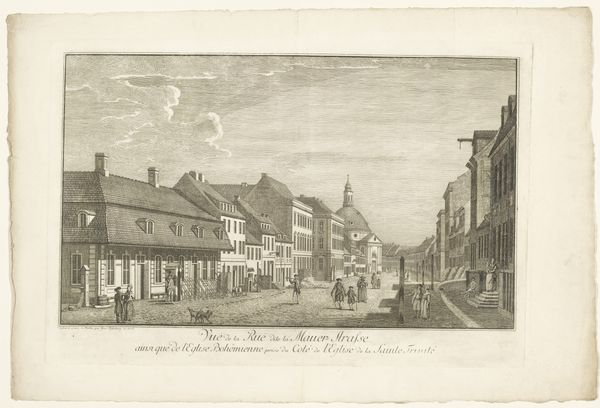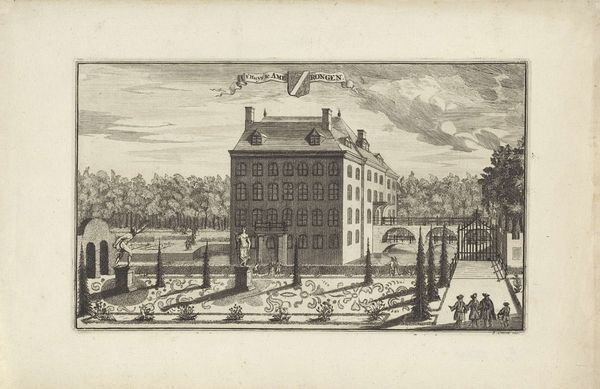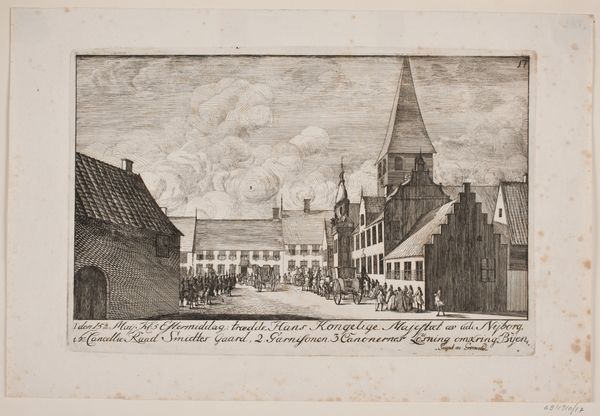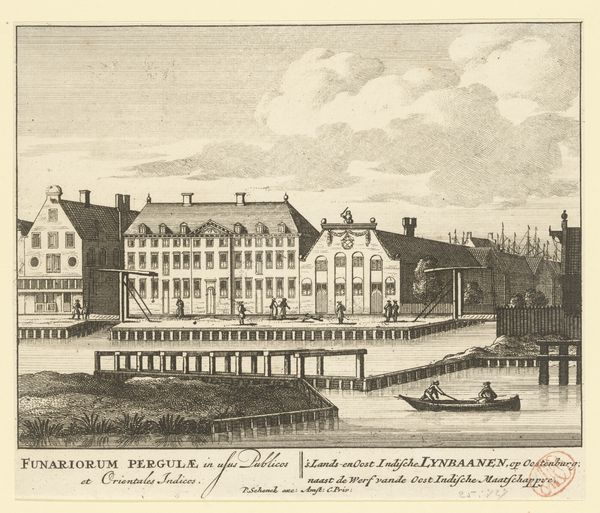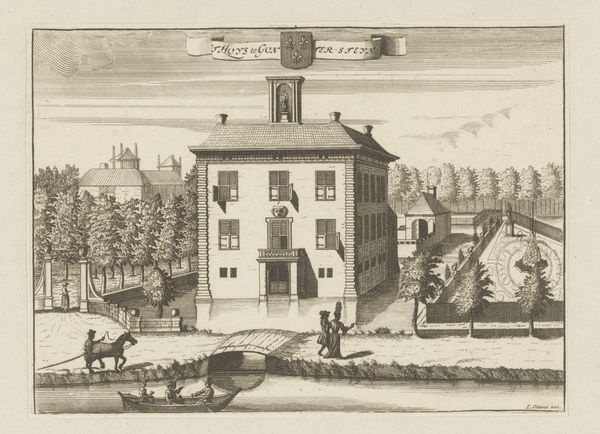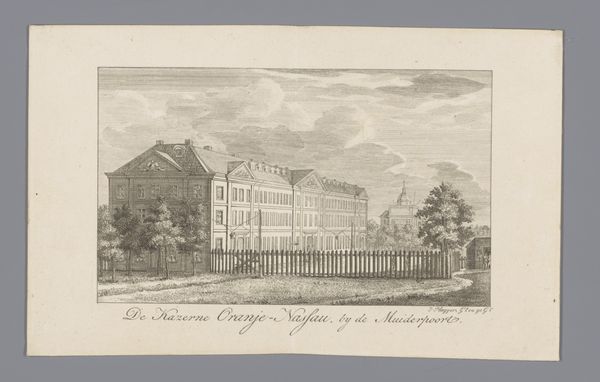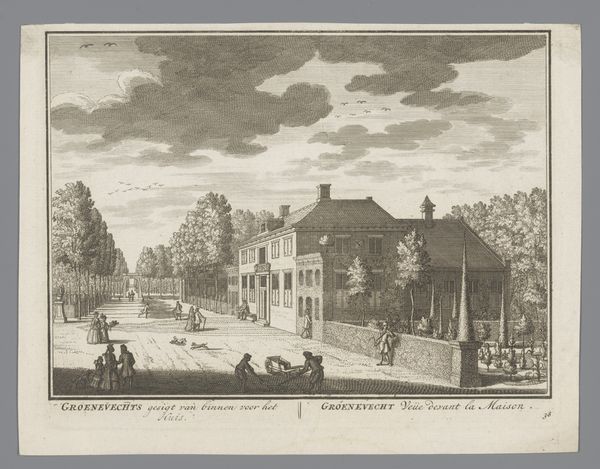
drawing, print, paper, ink
#
drawing
#
baroque
# print
#
landscape
#
paper
#
ink
#
cityscape
#
genre-painting
#
rococo
Dimensions: 215 mm (height) x 300 mm (width) (brutto)
Curator: Looking at this, I immediately feel transported back in time—it's all so neat, ordered, and kind of…grey. Editor: Indeed. What we’re viewing here is a print called "Kultorvet med Nørreport i København" dating back to 1756 by Johan Jacob Bruun. It provides a glimpse into Copenhagen's Kultorvet square. What sociopolitical dynamics might be in play when considering Bruun’s artistic choices here? Curator: Well, first of all, I find myself drawn to the cloudscape. It adds a dramatic flair, even though the rest is so precise and architectural. You can sense Bruun finding little moments of playful expression amidst the rigidity. But about those sociopolitical dynamics you mentioned… Editor: Notice the people – rendered almost as miniatures. What is being prioritized here: human activity or a demonstration of infrastructural power, embedded class hierarchies and social division of space? Curator: It’s undeniably the architecture, isn’t it? And everyone going about their business seemingly without a care in the world… But there is also a sense of the theatrical; I imagine the people as little stage players going about a structured show. Editor: That's a good point. Now consider: how might Bruun’s class position and proximity to the state enable or delimit the potential for any resistant expressions? Do you think that Bruun saw his subjects as part of a Rococo show? Curator: Hmmm... Perhaps Bruun subtly critiques the constructed order. Look how small everyone seems. I almost want to reach in there with a charcoal stick to mess around, shake things up. It feels too… manicured. Editor: Perhaps the "manicured" quality is precisely the point. It is through images like these that the Baroque elite reproduce a sense of superiority and control, reifying asymmetrical power relations and the consolidation of power through city infrastructure projects and city planning? Curator: I still see a bit of cheeky rebellion in those clouds though… But fine, yes, it’s hard to ignore that tidy cityscape in 18th century Copenhagen does smack of authority and power structures trying to manifest dominance. Still, as an artist, I am very attuned to any chance, even unintentional, occurrences during artwork's creation, those "happy accidents." Editor: Thanks to your insight, I am able to understand the cloud better! In the final analysis, what do we see, beyond social stratifications? The question of aestheticized representation comes into focus in view of our observations. Curator: Perhaps art-making has its own form of gentle resistance. Thanks to you for leading the conversation.
Comments
No comments
Be the first to comment and join the conversation on the ultimate creative platform.


